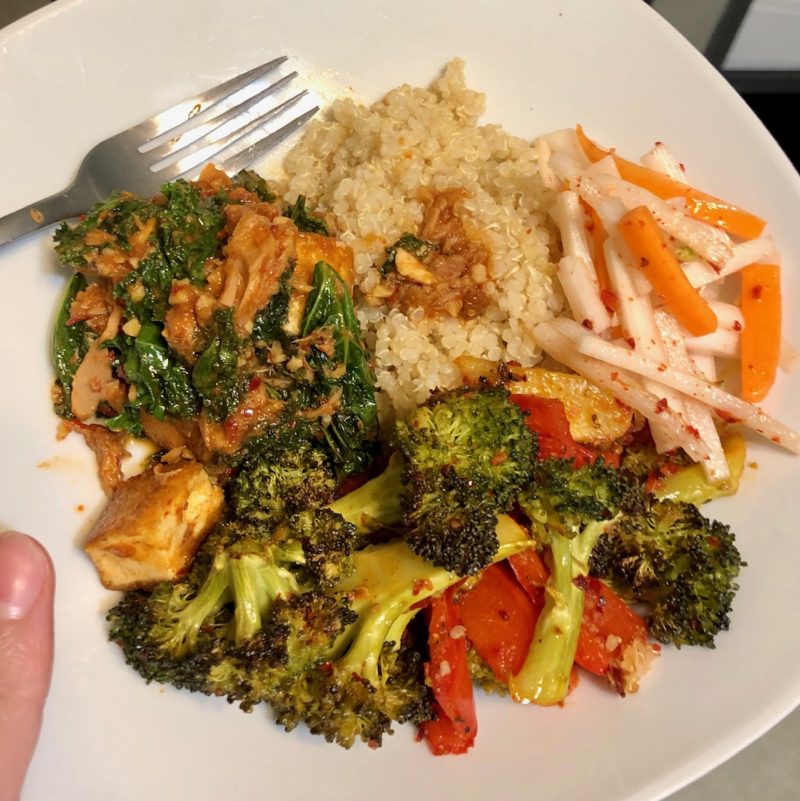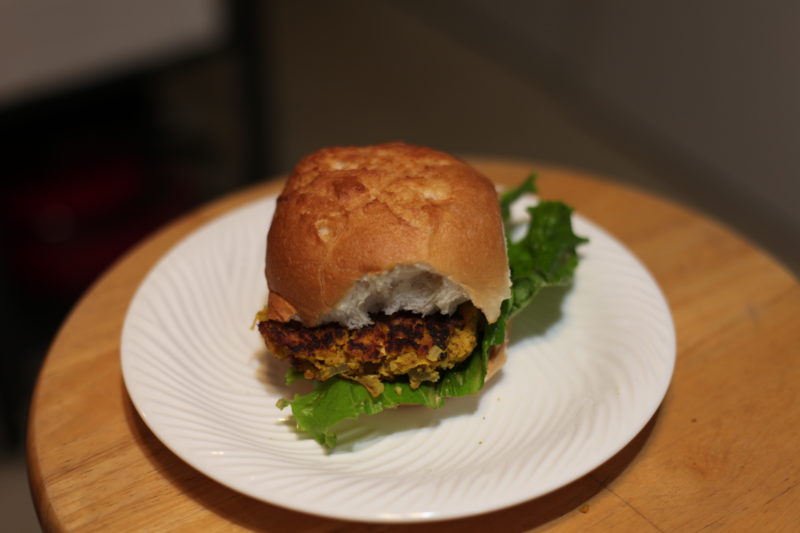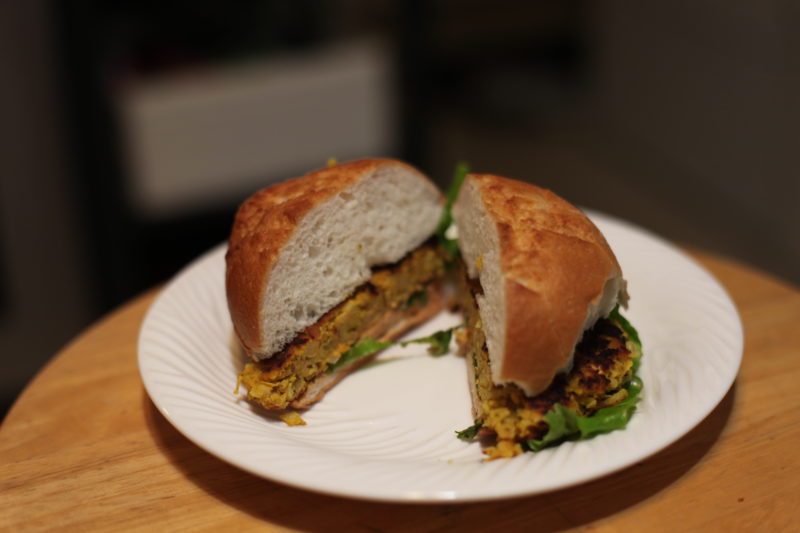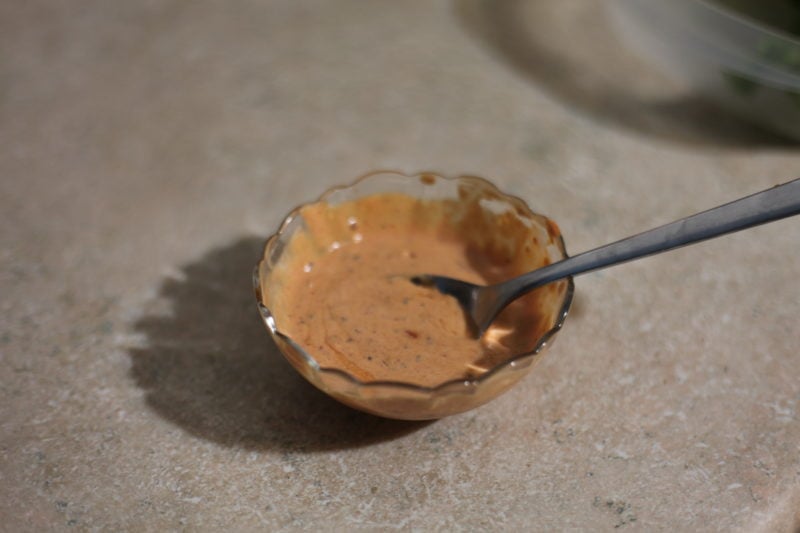
Parametric Cooking by Sabrina M. '21
how i make fifty plus recipes with just three!
In the world of design, there’s this idea of parametric design: designing based on a set of parameters and functions, rather than by just modeling. Now, I know that sounds confusing, but think of a cube. What is the best way to model a cube in 3D? Certainly, there’s a very easy way to make a cube, as most 3D modeling softwares have buttons that’ll do just that. In Rhino, the software I’m most familiar with, you can use the Box command, where you’ll click and drag to make a planar rectangle,01 hold shift while you do it to make a square and then drag to make it have a height, and thus, the cube is born. You can also input specific lengths, or make a cube with slightly different inputs, but the idea is the same. Now, let’s say you have 50 of these cubes in a model, and you just decided after copying them that you actually want rectangles. Now what? At this point, your most likely option is to go back and delete every cube you made, and then make 50 more rectangles.02 you could also get creative with scaling i guess, but that would change their position and that's not the point! Kind of a hassle, huh?
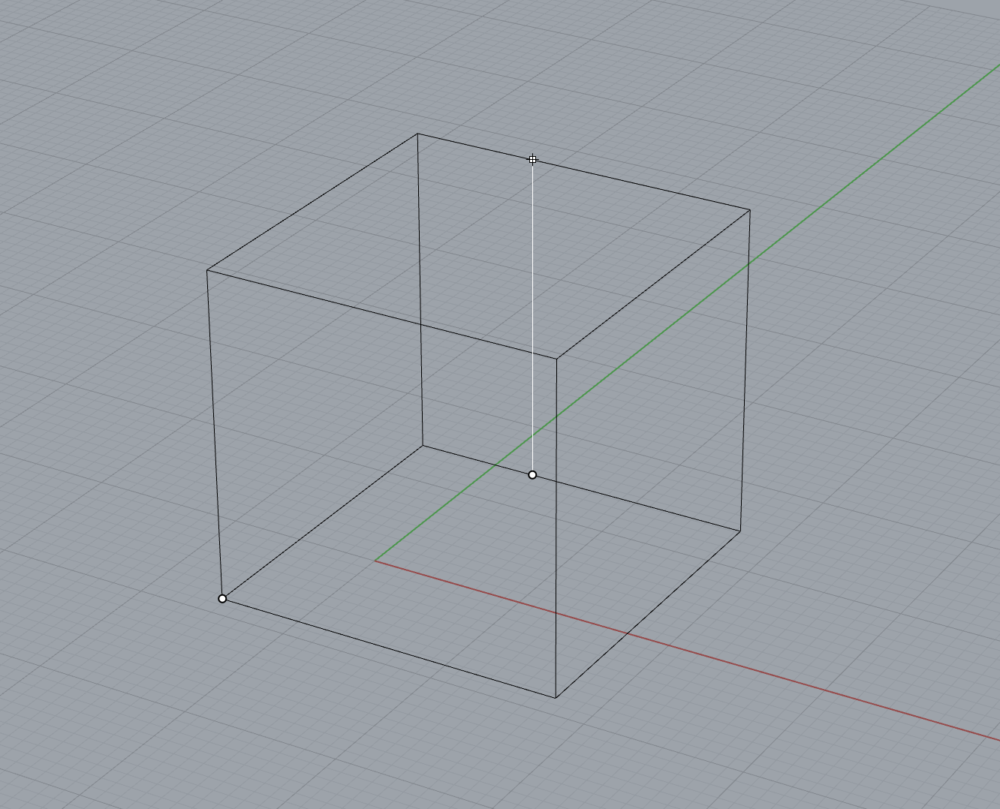
voila, a cube
Now, here’s where parametric design comes in. Let’s go back to the drawing board here, and let’s forego the simple drawing of the cube. Many of the most common 3D modeling softwares already have some aspect of parametric designing built in, like Revit and 3DS Max. Others, like Rhino and SketchUp, have associated plugins that’ll do it. To continue with the Rhino example, Grasshopper is the specific plugin that’s used to do parametric designs. But, where to start?
First, you need inputs for length, width, and height. Make a rectangle using your width and length segments, on the XY plane, and then use a Box component to extrude that rectangle to a desired height, which can be adjusted with a slider. Lastly, array this cube in a 25×25 array, and you’re done.
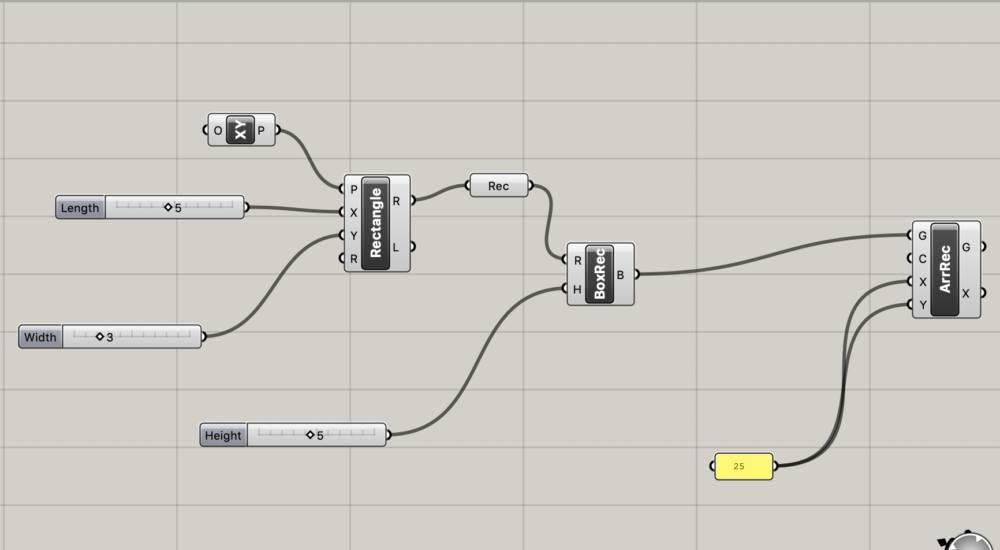
As you can see, now we can just tweak any of the small parameters: size, quantity, and arrangement, without having to restart the entire process.
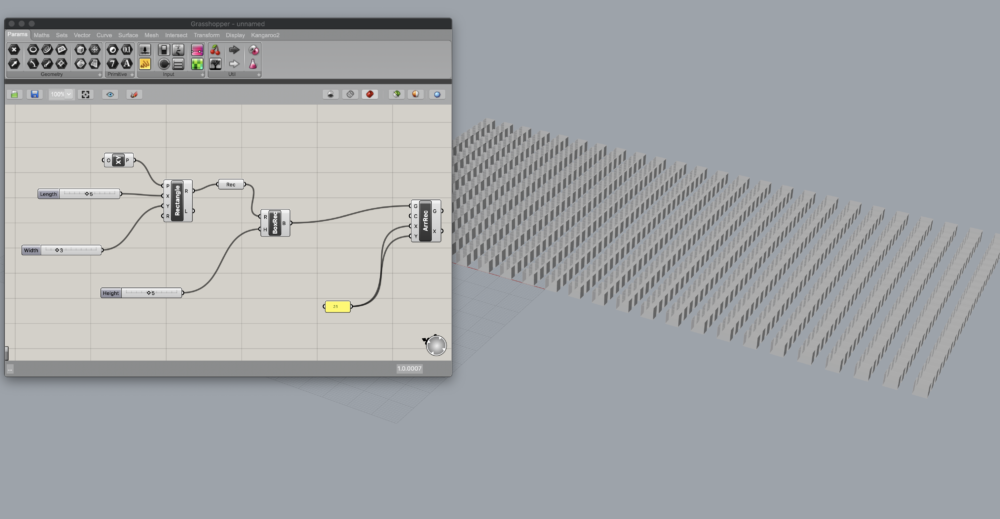
behold, my army of easily editable cubes
The same idea can be applied to cooking, if you just take the time to make your model right. I find recipes too limiting most of the time; they’re a good starting point for learning the basics of cooking,03 how long to cook a steak, what spices work well for different styles of cuisine, how to utilize different techniques but it’s very easy to get caught up in the exactness of it. Especially in young adulthood, when, let’s be honest, you don’t always have every ingredient they list in their recipe. Or even half of them. Trust me, I’ve been there. But luckily for you, I’ve spent years mastering the art of clearing out old ingredients, and I’ve already got a few scripts and formulas you can use.
Base Knowledge
For you to be able to execute any of the formulas going forward, I have to establish some base prior knowledge. With cooking, there are a few things that are pretty consistent across the board. So, before we start, first let’s establish some constants in all of these recipes, not to be confused with chemical formulas:
- heat, H
- pan fry, H1
- bake, H2
- simmer, H3
- water, W
- egg, E
- sauce base, B
- yogurt, B1
- mayo, B2
I also have to introduce a bit of a Spice Theorem I’ve been following, with a little help from, in my opinion, the most useful piece of cooking media out there. For spicing food, it can be hard to know what’s good and what works. If you try your hand at a lot of different styles of cuisine and experiment, you can get the hang of intuitively knowing this. To save you the effort of years of cooking, I have a handy little guide worked out. This is just a simplification of spices, flavorings, and pastes I find work well together, so you don’t need to have every single component.
Spice Blends, S
- oregano, thyme, fennel, basil, chili flakes, lemon juice
- tomato paste
- cumin, chili powder, coriander, turmeric, mustard seed, cinnamon, lime juice
- tomato paste, curry paste
- cumin, paprika, garlic, adobo, cilantro, lime juice
- tomato paste
- mint, thyme, oregano, parsley, dill, lemon juice
- tomato paste, harissa
- chili flakes, white pepper, ginger, honey, soy sauce, rice vinegar
- miso, gochujang
- ginger, basil, cilantro, fish sauce, chili powder, coconut, lime juice
- chili paste, thai curry paste
*salt and pepper are by default, included in every blend
**italicized ingredients are the associated acids
The flexible part of these formulas is you can put as much of anything as you want. Just like the components in a script, you can add less of X and more of Y, and maybe double the whole F(X, Y) entirely. Although some parts of it will be more specific,04 don't add multiple tablespoons of salt! don't add four cups of water per cup of rice! Don’t be afraid to just taste your food/sauces/components during each step if possible, because there’s no better way to avoid over or under-doing anything than by just doing things gradually.
Tips Before You Go In
- salt and taste as you go! there is nothing worse and more irreversible than oversalting what could have been a delicious meal.
- there are few occasions in which you’ll overseason a meal otherwise. i’d start with about 1 teaspoon per spice added, and if you find it’s not enough, keep adding as you go. i’ve seen too many people think they’re putting too much seasoning, and then it turns out they didn’t put nearly enough!
- always add a bit of acid to balance your meal. no matter what.
- careful with pastes. miso can be extremely salty, harissa is very spicy, tomato paste is acidic, so take that into account when selecting other ingredients.
Formulas
VARIABLES
- vegetables, V
- hearty vegetable, V1: sweet potato, regular potato, turnip, winter squash, corn on the cob, beets
- light vegetable, V2: carrots, broccoli, brussels sprouts, radishes, peppers, tomatoes
- leafy green, V3: kale, spinach, chard, cabbage
- aromatics, V4: garlic, onion, leeks, celery
- protein, P
- legumes, P1: chickpeas, black beans, lentils, white beans
- meats, P2: chicken, beef, pork, fish
- egg, P3: egg
- grains, G
- white rice, brown rice, farro, quinoa, bulgur, freekeh
- seasoning, S
- seasonings, S1: selected from a blend above
- bouillon, S2: chicken, vegetable, beef
- pastes, S3: tomato paste, curry paste, miso, gochujang, harissa paste
- sauce, C
Roasted Vegetables and Grains
FUNCTIONs
For this one, you take any amount of vegetables from V1 (hearty vegetables), V2 (light vegetables), and V4 (aromatics) to roast, coated in oil and spices, then cook a grain of choice in stock, and pair it with a yogurt based sauce, which is spiced based on the seasonings chosen before. Add an egg on top for protein, and you’re done.
F(V, G, S) = H2(S1(V1 + V2 + V4)) + H3(S2(2W + G)) + C(S1) + P3
C(S1) = B1 + S**
Instructions
- Preheat the oven to 400 degrees.
- Chop up your vegetables in evenly sized cubes, from 1 inch to 1/2 inch in size. Garlic can be roasted in whole cloves.
- Coat your vegetables with olive oil and the seasonings in a bowl, then transfer to a large sheet pan.
- When the oven is done preheating, place the vegetables in, moving them every 15 minutes to prevent burning.
- Take your grain, the appropriate amount of water (most grains use a 2:1 water to grain ratio), and your bouillon of choice, and place it in a pot on high heat. I use 1 bouillon cube per cup of water, but you can use more or less depending on your taste.
- Once the pot has reached a boil, cover the pot and reduce the heat to low, let simmer for however long it says on the bag (this can range from 10 minutes to 1 hour, depending on the grain).
- After about 30 minutes, check on the vegetables. Are they beautifully browned and crisp? Eat one, see if it’s cooked. Good? Take it out. Not quite? Try another 10 minutes.
- Once the vegetables are cooked to your standards, take them out of the oven to cool for 10 minutes.
- While they cool, make your sauce. Noted in the formula above, sauce is a function of the seasonings you chose, so this is going to depend on how you’ve flavored your vegetables. All it takes is some yogurt, the associated acid for whatever spices you chose, salt, pepper, and garlic. You can also add any fresh herbs or spices from the list chosen, but the simple base one is a solid choice, in my opinion.
- Optional: add a fried or poached egg on top.
And like that, recipe 1 is done! Plate it up in a nice bowl, and marvel at your very adult portion of vegetables.
Soups and Stews
Functions
This recipe is a throw-it-all in the pot that just involves sautéing your aromatics, V4, and then dumping everything else in a pot and letting it simmer for at least 45 minutes. For protein, you can use any or multiple as you please. Any and all vegetables are also welcome.
F(V, P, S) = H3(H1(V4) + V1 + V2 + V3 + P + 3W + S1 + S2 + S3 + S**)
Instructions
- Dice up your aromatics, and sauté in a large pot on medium heat until soft, about 5 minutes.
- Chop up the remaining vegetables into bite sized pieces.
- If using a meat, P2, toss that in the pot to brown. If not, skip this step.
- When the meat is done browning, add the heartier vegetables, V1 and V2, to the pot, along with enough water to cover everything (or more, depending on how you like your soups). This should be approximately 3 cups per cup of ingredients. Raise heat to high.
- Add bouillon cubes, approximately 1 per cup of water, seasoning mix, and a spoonful paste of choice, if using one. Always add more seasoning than you think, soups have a lot of volume to cover.
- Once the soup has started boiling, cover it with a lid and reduce to low heat to let simmer for at least 40 minutes, stirring occasionally to prevent sticking.
- After 40 minutes, check on the soup. If all the vegetables are cooked, add your leafy greens, V3, and then the associated acid for your spice mix, if you haven’t already added it. Stir, and let simmer for 5 more minutes.
And like that, you have soup! Simple and delicious, warm and comforting, the perfect meal for New England’s colder months.
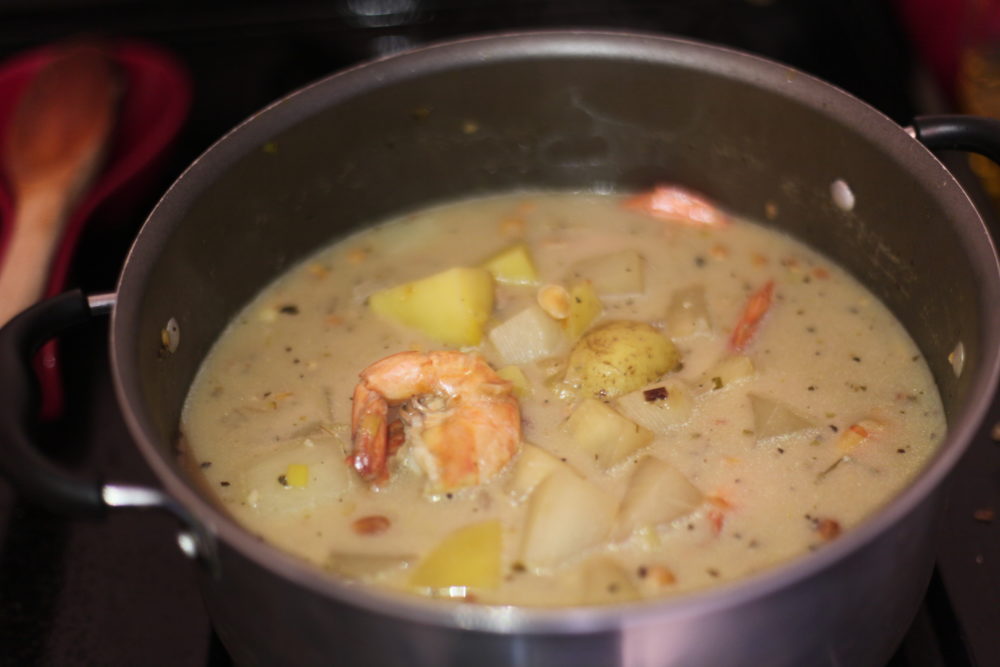
an attempt at a sour and spicy shrimp soup
Veggie Burgers
Functions
This burger is a bit of a tricky one, but can be so rewarding when you realize all those veggie burgers you’ve eaten are not worth the hefty price tag. I’ll give an exception to the Impossible and Beyond Meats, but otherwise, there’s no need to pay a premium for a patty made of beans. So, the idea is simple: you take some legumes, breadcrumbs, an egg, seasoning, and mash it all together and form patties. Then cook and voila.
F(P, V, S, G) = H1(P1 + P3 + S1 + S2 + V4 + G) + C(S1)
C(S1) = B2 + S1 + S**
Instructions
- Take a can of your chosen legume, P1, and microwave for 3 minutes in a large bowl, until softened. Mash it together with a fork.
- Finely dice up your aromatics and add them to the bowl.
- Add your seasonings and a teaspoon of desired paste, along with either half cup of cooked grain, or half cup of breadcrumbs. Taste the mix (everything is cooked, don’t worry), and adjust to your taste. When you like it, add one raw egg.
- If you have time, chill this mixture for half hour. If not, just go straight to forming mix into patties by hand, and put them aside.
- Heat up oil in a non-stick pan on medium heat.
- Place patties in pan, cooking until it is browned on both sides and can keep its shape somewhat.
- Make your sauce, which is a mixture of mayo, seasonings similar to your above list (any fresh herb from the list works wonders) and its associated acid, salt, pepper, and a bit of honey for sweetness.
- Toast some buns and serve.
Now you can, too, wow your friends with homemade veggie burgers and aioli, and never again will you crave a frozen one. Don’t fret if it’s a little crumbly, that’s just how it is sometimes.
And that’s it, there’s the parametric cooking. Take a few parts V1, some of P2, some S, and you have a thousand of different meals. I mean, I also don’t only stick to these three configurations, but these are definitely heavy in the rotation. You can never get bored with these because you just have to change up the spices, or the vegetables, or any part of it! I’m also a big fan because of how many vegetables I can jam into one meal, which is good for health, but also reducing food waste when I have a ton of veggies starting to go bad in my fridge. Maybe you can recreate some, if the math isn’t too confusing. Either way, I’m always down to chat about cooking at MIT, using odd vegetables, and making vegetarian copycat recipes.05 ask me about my vegan ziti recipe that 9/10 of guests preferred over a regular, meaty ziti
- hold shift while you do it to make a square back to text ↑
- you could also get creative with scaling i guess, but that would change their position and that's not the point! back to text ↑
- how long to cook a steak, what spices work well for different styles of cuisine, how to utilize different techniques back to text ↑
- don't add multiple tablespoons of salt! don't add four cups of water per cup of rice! back to text ↑
- ask me about my vegan ziti recipe that 9/10 of guests preferred over a regular, meaty ziti back to text ↑
